When it comes to annuals, you can always rely on trusty geraniums to fill up your baskets, containers, and gardening beds. Whether you want a little bit of fragrance to brighten up the patio or a tall flower to frame the backdrop of your front yard, the geranium flowers have you covered. Learn about the different types of geraniums and the best way to grow and care for them.
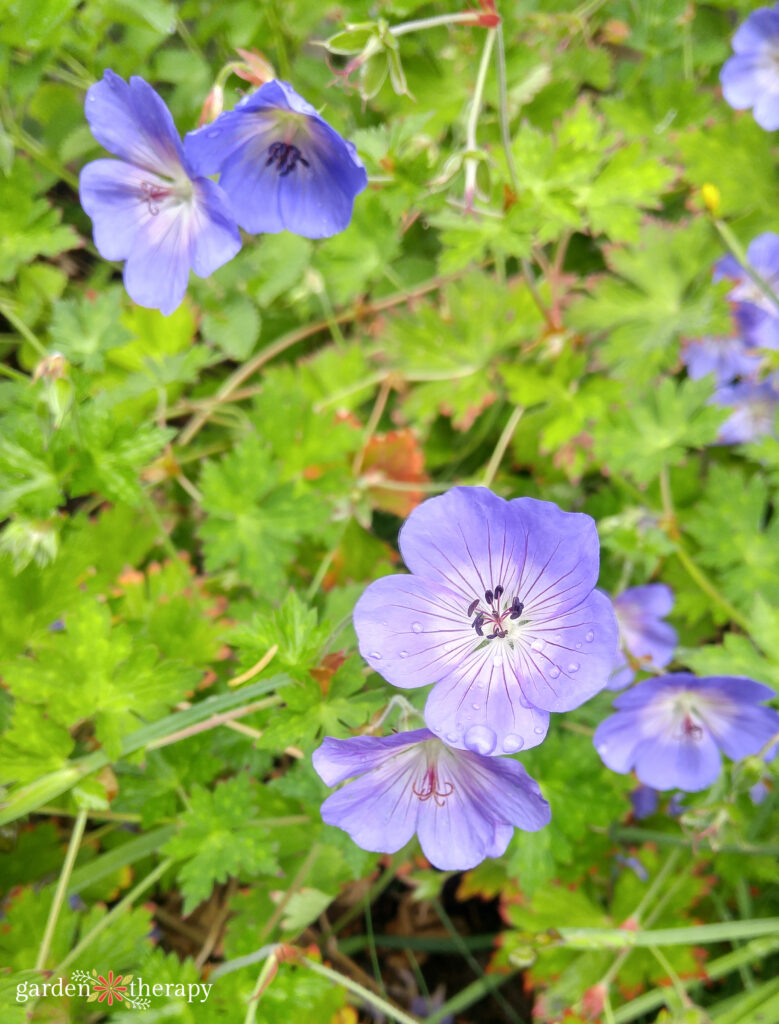
This post will cover…
- What is a True Geranium?
- Types of Geranium
- Geranium Benefits
- Growing Geraniums
- Overwintering Geraniums
- How to Care for Geraniums
- Light
- Water
- Fertilizer
- Pruning
- Pests and Diseases
- Frequently Asked Questions About Geranium
- More Flower Guides
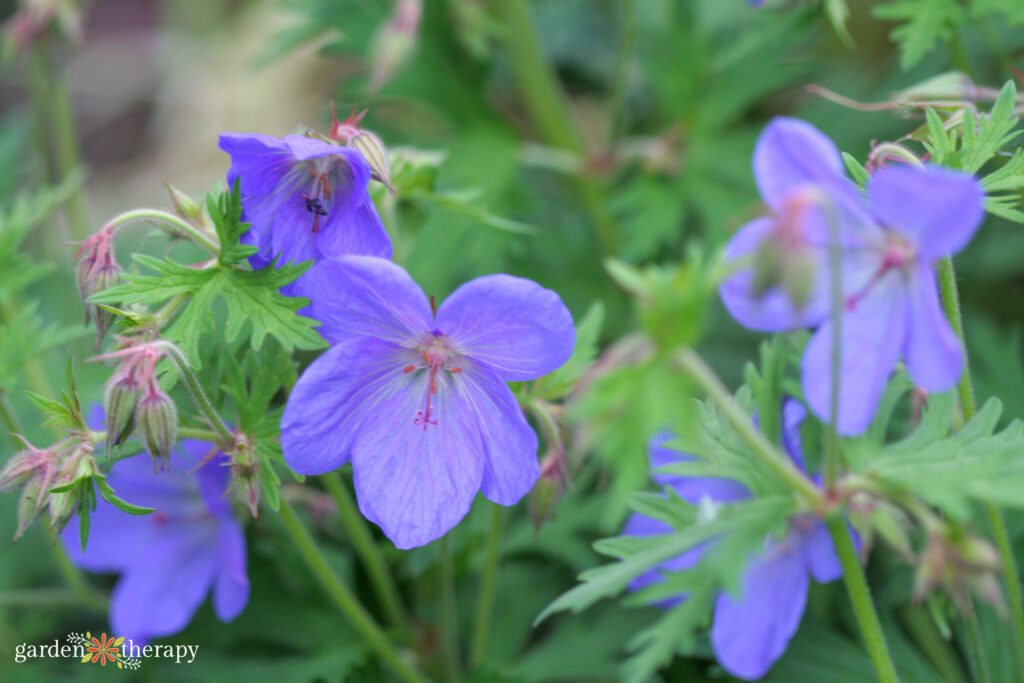
What is a True Geranium?
Not all geraniums are…well, geraniums. At the garden centre, you may be confused by seeing geraniums in the annual AND perennial sections. One of those is an imposter!
Annual geraniums actually belong to the Pelargonium genus and are the popular bedding and container annuals you buy. Originally from South Africa, they became their own genus in 1789 and still get mixed up to this day. However, both true geraniums and pelargoniums belong to the Geraniaceae family, so the resemblance isn’t too far off!
Types of Geranium
Below are some of the most common geraniums from both the Geranium and Pelargonium genera.
- Perennial geranium (Geranium macrorrhizum): Also known as the cranesbill or hardy geranium, this is the most popular true geranium. While it isn’t as bright and won’t have any variegation like pelargoniums, they still have notable flat flowers. Prune them back every year for amazing flowers the next season.

- Wild geranium (Geranium maculatum): This is another true geranium that is native to the woodlands of eastern North America. It has pinkish-purple flowers and dissected leaves. It easily spreads and naturalizes in the garden.
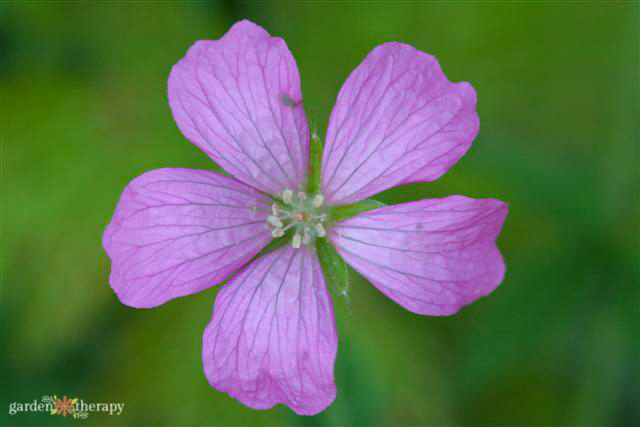
- Scented Geranium (Pelargonium graveolens): This variety has smaller flowers and leaves and the fragrance is often the reason people choose to buy them. They come in all kinds of scents such as mint, apple, citronella, etc. The sweet-scented geranium has a rosy and sometimes minty scent that is the main variety cultivated for geranium oil.
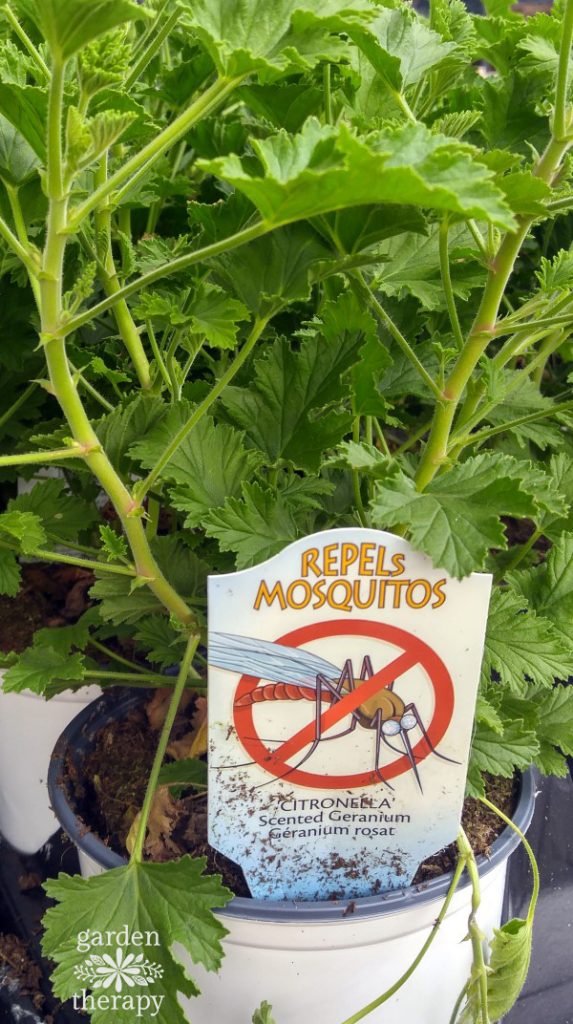
- Regal geraniums (Pelargonium x domesticum): Also known as fancy leaf or Martha Washington geraniums, these annuals are known most for the double colours on their bright petals. You also see some leaves with variegation.
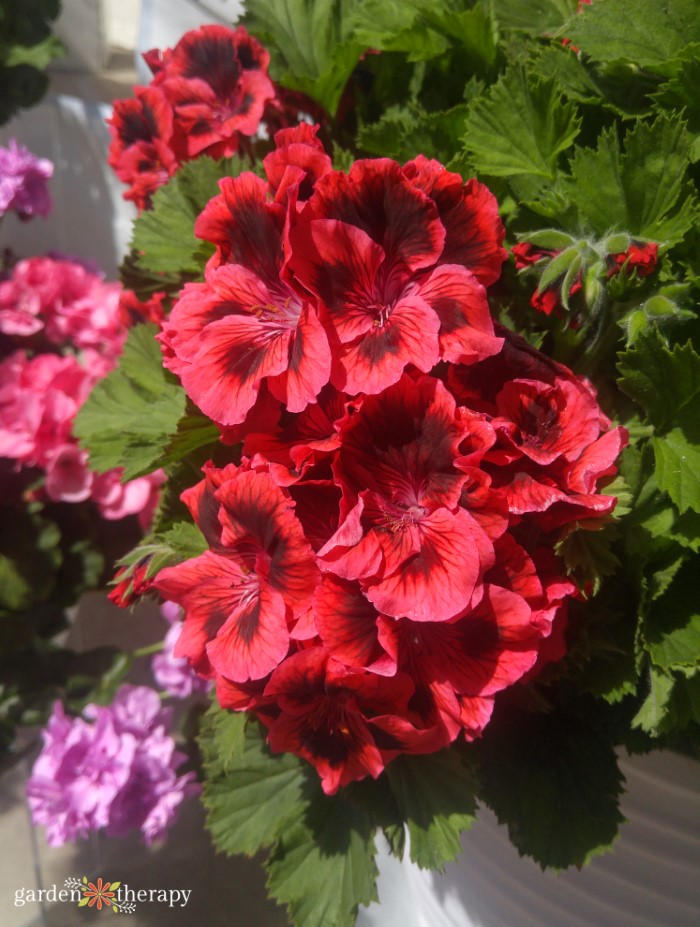
- Zonal geraniums (Pelargonium x hortorum): These are also known as the common or annual geranium and are very popular thanks to their colour variety. The flower appears as upright, balls of flowers springing from plant-like pompoms. These plants never go to seed and can only grow through cuttings.
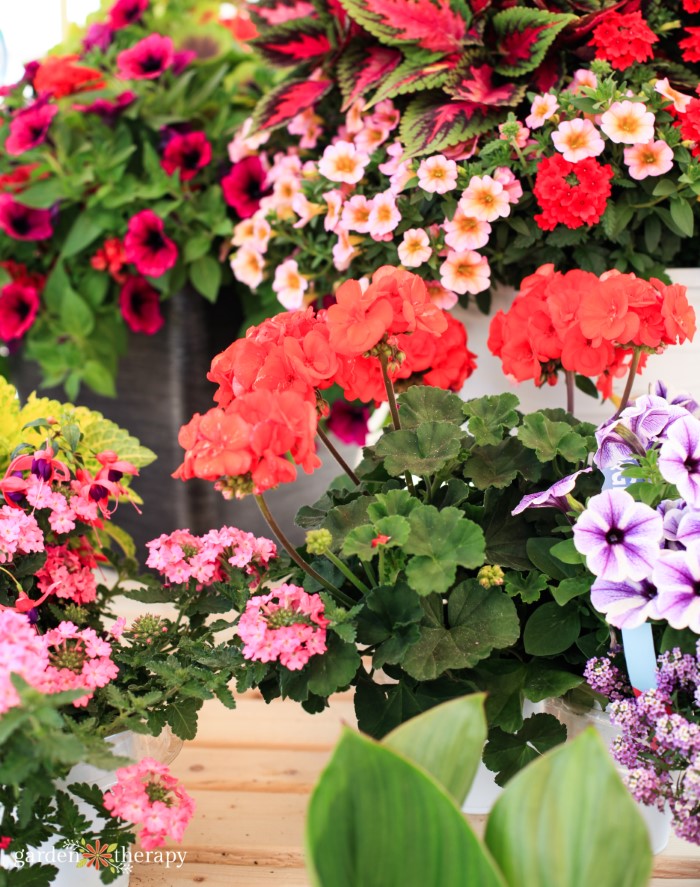
Geranium Benefits
In the 17th century, people used pelargonium for food, drinks, potpourri, and perfume. Bulgaria, in particular, used it to make rose geranium essential oil. Folk medicine used the plant as a pain reliever, which was also a sedative, antimicrobial, and antifungal.
To this day, the orange-rose fragrant geranium oil remains popular. While geranium oil is produced from many pelargonium species, sweet-scented geranium is the main part of the oil. In aromatherapy, it has relaxing and antidepressant effects. Geranium oil is also used as a fragrance for perfume, soap, and creams.
Externally, the oil can be used to treat acne, skin rashes, bruises, cuts, ringworm, and hemorrhoids. It can reduce inflammation and control bleeding. For skincare, it works as a cleanser and an astringent for oily skin.
The plant can provide pain relief when inhaled, ingested, or used topically. When ingested, it can help with pre-menstrual and menopausal symptoms. Many also enjoy the plant as a flavouring agent.

Growing Geraniums
If you want to plant pelargonium flowers in your garden, then follow the instructions below. True perennial geraniums have different growing and care requirements.
Once the danger of frost has passed, plant your geranium in moist, well-drained soil. Add some compost to the soil to encourage brighter and more flowers.
Geraniums can grow up to 3 ft tall, so make sure to tuck them into the back of the bed so they don’t shadow other ornamental annuals. They prefer full sun locations.
Most people like to plant their geraniums in containers, hanging baskets, and gardening beds as they do well in tight spaces.
Overwintering Geraniums
Without winter protection, pelargoniums will die back in the winter. Some gardeners have success overwintering the plant by cutting them back and bringing them inside. While they don’t go into complete dormancy, they require less water and sunlight during this time.
But the best way to keep your geraniums for another season is to propagate them. Take some cuttings from the plant in the fall and grow new plants inside for the winter. Add the remaining parts of the plant to the compost bin. Come spring, you can plant your new geranium flowers outside.
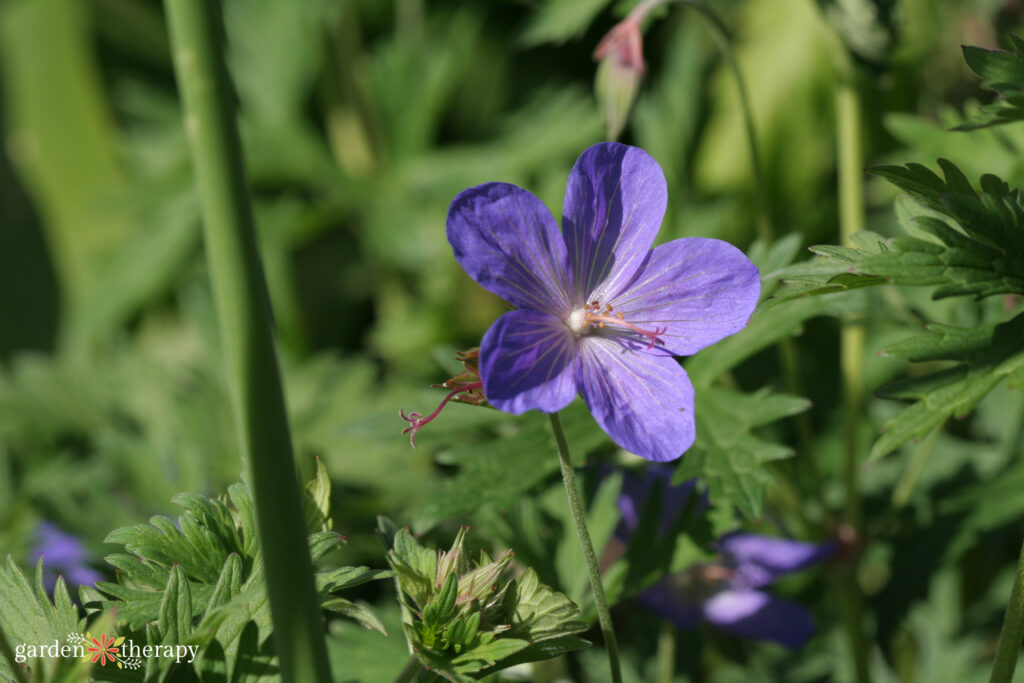
How to Care for Geraniums
Use these guidelines to care for your pelargoniums during the growing season.
Light
Geraniums prefer full sun to partial shade. If you place your geranium under glass, protect it from any direct sun. If your geranium stops blooming in the summer, try giving them some shade during the hottest time of the day. The blooms may come back!
Water
Annuals typically require more water than their perennial counterparts. During the summer, water your geraniums well but allow them to dry between waterings. Semi-drought tolerant, they can handle being dry for a little bit. But don’t let them stay dry for too long or they will begin to drop leaves.
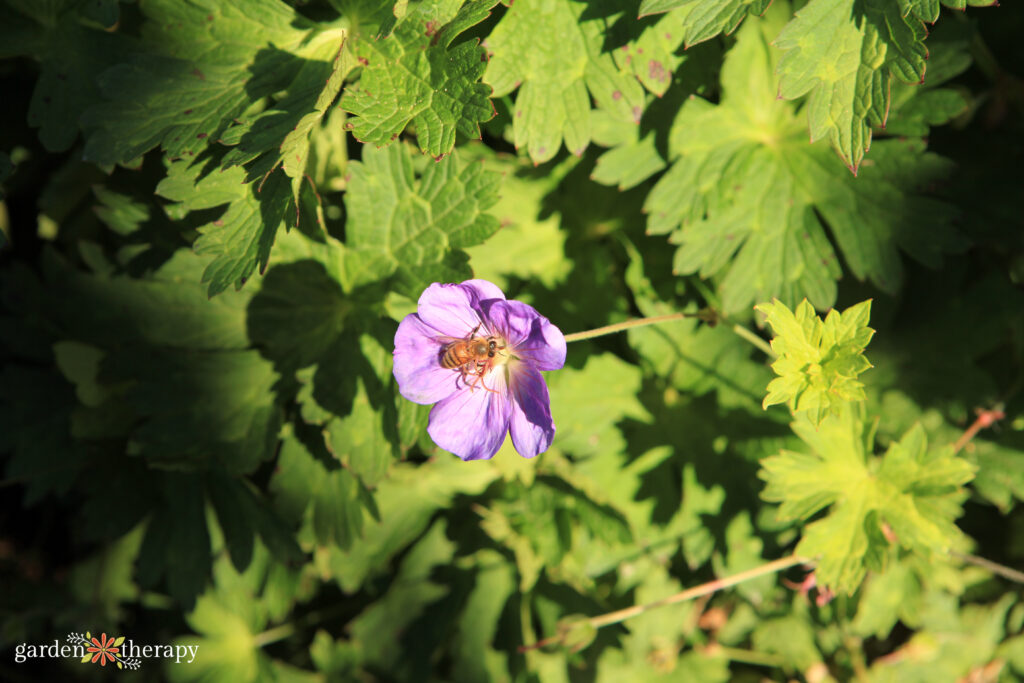
Fertilizer
If you planted geranium in a container, add liquid fertilizer to your water every other week. Geraniums planted in beds will be fine without.
Pruning
Geraniums need to be deadheaded to encourage additional blooms. When removing the flowers, remove the whole flower stalk.
If you plan on trying to overwinter your geraniums, cut back a third of the plant before bringing it inside and it enters its dormant period.
Pests and Diseases
In warm and humid climates, geraniums are more susceptible to fungal problems. The most common issue you’ll see with geraniums is pelargonium rust. A fungal disease from too much moisture, you can avoid it by providing enough room between plants and watering at the base of the plant. Pelargonium rust looks like brown spots under the leaves. If you spot it, get rid of those leaves and the whole plant if necessary.
Other pests that may affect geraniums include whiteflies, aphids, and spider mites.
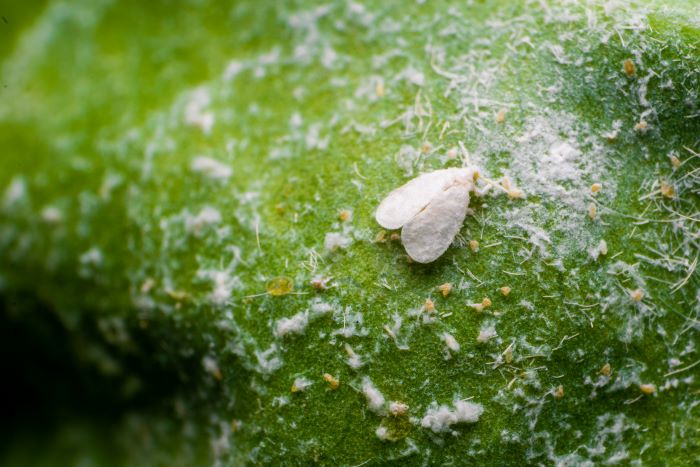
Frequently Asked Questions About Geranium
When the plant has gotten weak or the petals turn brown in colour, it’s time to deadhead the plant. This will encourage the plant to send out more blooms. When deadheading, remove the whole geranium flower stem rather than the top flowers.
While geraniums aren’t their favourite plant, you may find your deer munching on geraniums. The fuzzy leaves and fragrances usually are enough to detract deer from eating geraniums. But if there is nothing else worthy of eating in the area and they’re hungry, they will eat them.
Geraniums are mildly toxic to pets due to the geraniol and linalool inside the plant. If ingested or rolled on, it can cause rashes, lethargy, low blood pressure, and a loss of appetite. If they come in contact with it on their skin, wash the affected area. Most pets will only have mild symptoms but call your vet for guidance if you suspect they ate geraniums.
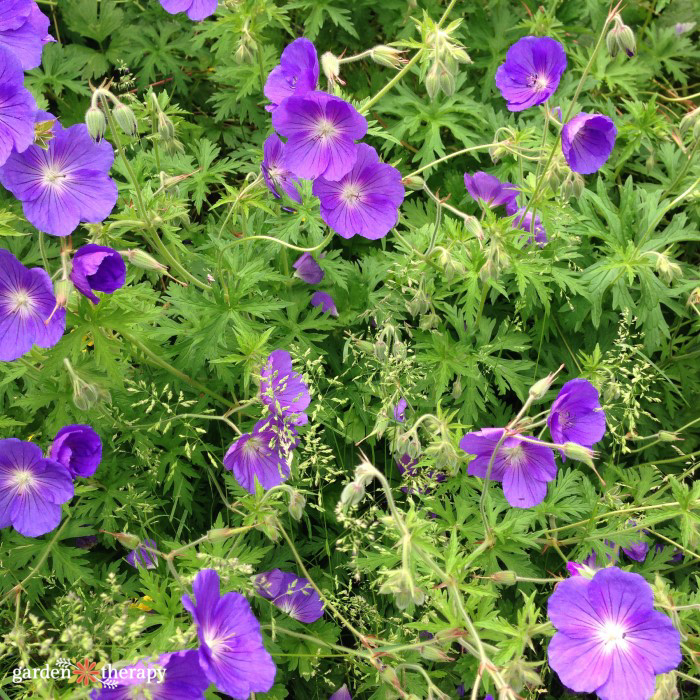
Do you have any more questions about geraniums? Leave them in the comments down below and I’ll answer them if I can!

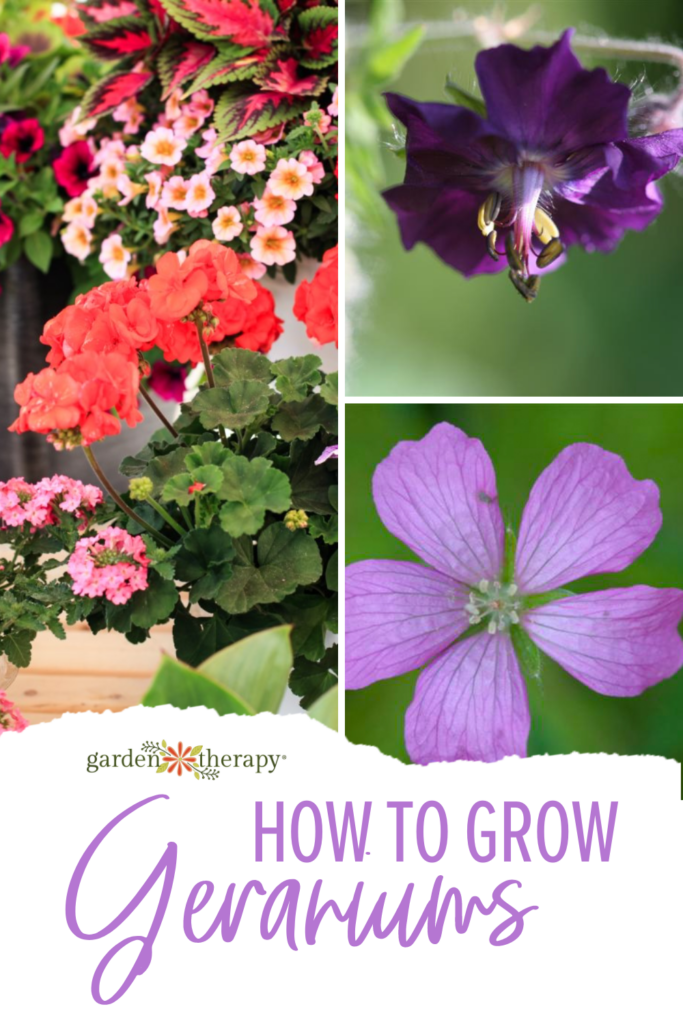



Thank yoh. I love your puzzles and ideas!🌸